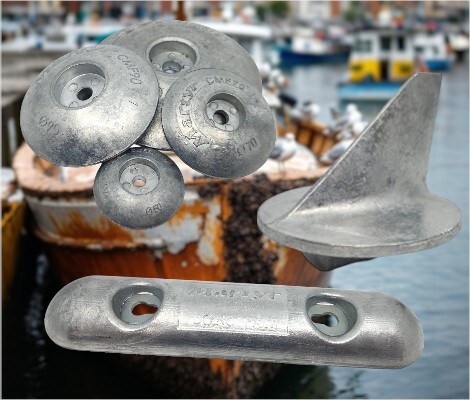Everything You Need to Know About Bilge Pumps for Boats
29th Oct 2025
Introduction
Bilge pumps are essential safety and maintenance equipment on any boat, helping to remove unwanted water from the hull to prevent damage or sinking. For boat owners, particularly in Australia, understanding the different types of bilge pumps, installation best practices, and maintenance tips is vital. This guide explores everything about bilge pumps, including popular variants like Johnson SPX Aqua Void Bilge Pump 500GPH and Johnson SPX Ultima Bilge 12v frequently searched by boating enthusiasts.
What Is a Bilge Pump?
A bilge pump is a device designed to remove water from the lowest part of a boat known as the bilge. Water can accumulate there due to rain, waves, leaks, or condensation. The pump helps keep your boat dry, stable, and safe by pumping water overboard automatically or manually.
Types of Bilge Pumps
Automatic Bilge Pumps
Automatic bilge pumps are equipped with a float switch that activates the pump when water reaches a certain level in the bilge. These pumps provide hands-free operation, turning on and off automatically to keep your boat dry without requiring manual intervention. They often feature integral or external float switches; integrated designs reduce wiring complexity, while separate switches offer flexible placement. Leading models like the SPX Johnson Ultima, Rule and Seaflo pumps boast reliability, easy installation, and energy efficiency, making them a popular choice for recreational boaters and professionals alike. These pumps are ideal for continuous protection, particularly in tight engine compartments or below decks.
Manual Bilge Pumps
Manual bilge pumps are hand-operated devices typically used as backups or for small vessels without power pumps. Though they require physical effort, manual pumps are incredibly reliable, especially in emergencies where power may be unavailable. Popular models such as the SPX Flow Johnson Viking Bulkhead feature robust stainless steel components, offering durability and ease of maintenance. Manual pumps come in single and double-acting designs; double-acting models pump water during both handle strokes, increasing efficiency. They are suitable for smaller boats, tenders, or as secondary equipment on larger vessels.
Centrifugal Bilge Pumps
Centrifugal pumps operate using an impeller that spins to create centrifugal force, moving water outward from the centre to the pump’s discharge. They are the most common type of electric bilge pump on recreational boats due to their steady flow rates and ability to handle small debris. Centrifugal pumps deliver consistent performance for moderate volumes of water and are cost-effective choices. However, most are not self-priming and inefficient at pumping water uphill, which means some water always remains in the bilge unless supplemented by another pump type. Care must be taken to avoid running centrifugal pumps dry, as this can cause impeller damage.
Diaphragm Bilge Pumps
Diaphragm bilge pumps use a flexible diaphragm that reciprocates to move water through the pump chamber. These pumps excel in pumping thicker fluids, water with solids, or debris-laden bilge water where other pumps might clog. They are often self-priming and capable of dry running without damage. Manual diaphragm pumps are common among mariners needing durability, while electric diaphragm bilge pumps provide efficient handling of challenging bilge conditions. Popular manual diaphragm pumps like the SPX Flow Johnson Viking Bulkhead are praised for their ease of service, reliability, and ability to pump water and waste fluids with equal effectiveness.
Key Features and Specifications
Flow Rate and Capacity
Bilge pumps are typically measured by their flow rate or capacity, expressed in gallons per hour (GPH) or gallons per minute (GPM). For recreational boats, bilge pumps commonly range between 500 to 1,000 GPH, which equates roughly to 8 to 16 GPM.
- Boat size and bilge volume determine the required flow rate, with larger boats needing pumps with higher GPH. For example, boats less than 18 feet may require pumps rated 300-500 GPH, while boats around 30-35 feet benefit from pumps rated 1,000-1,600 GPH.
- In practice, real pumping capacity is often reduced by about 40% due to factors such as head height (vertical lift), hose friction, and bends in discharge lines. So selecting a pump with a higher theoretical GPH rating than the minimum boosts your safety margin.
- For emergency readiness, multiple pumps or a combination of automatic and manual pumps are common for added redundancy.
Power Source
Most bilge pumps operate on 12V DC power supplied directly from the boat’s battery system. This power source integrates with the boat’s electrical system enabling automatic pump activation via float switches or manual operation through dashboard switches.
- Backup options include marine solar power systems or auxiliary battery packs ensuring functionality even when the main power supply is compromised.
- Wiring and installation should always conform to marine electrical safety standards to avoid shorts and corrosion-induced failures.
Materials and Durability
Corrosion resistance is a primary consideration in bilge pump materials because they operate in harsh saltwater or freshwater environments that can rapidly degrade metal components.
- Marine-grade plastics and stainless steel are common materials used in pump housings, impellers, and hardware to maximise durability and lifespan.
- Pumps designed specifically for marine applications feature UV resistance, salt spray protection, and sealed motors to prevent water ingress.
- Regular inspection of hose fittings, clamps, and electrical connections further prolong pump life and operational reliability.
Installation Tips
- Position the pump at the lowest point of the bilge to maximise water removal efficiency.
- Ensure hoses are properly secured with clamps and are free from kinks or obstructions.
- Install a separate discharge outlet above the waterline to prevent backflow.
- Test the pump prior to sea to confirm automatic switches or manual operation functionality.
Maintenance and Troubleshooting
- Regularly clean the pump strainer and inspect for debris or corrosion.
- Test automatic float switches monthly to avoid pump failure during critical water intake.
- Replace worn wiring or damaged hoses immediately.
- Monitor electrical connections for corrosion or looseness.
Regulatory and Safety Considerations in Australia
- Comply with state maritime safety authority requirements for pump capacity, type, and redundancies depending on boat size.
- Maintain accessible documentation for inspections or resale.
- Consider adding backup manual or secondary automatic pumps for larger vessels or offshore operations.
Conclusion
Choosing the right bilge pump for the boat and maintaining it properly is essential for a safe and worry-free boating experience. Understanding the different pump types, matching the pump capacity to your boat’s needs, ensuring correct installation, and performing regular maintenance can prevent costly damage from water ingress and keep your vessel compliant with Australian maritime safety standards. With harsher marine environments and strict regulations across Australian states, equipping your boat with a reliable bilge pump is not just a good practice—it’s a critical safety measure.
At Boaters World, we are committed to helping you find the best marine equipment tailored to your needs. Whether you're upgrading your bilge pump or installing one for the first time, our expert team offers high-quality products and professional advice to keep your boat safe and performing at its best. Visit Boaters World today for trusted marine parts, expert support, and unbeatable service—helping you navigate the waters with confidence.
Visit Boaters World today for trusted marine parts, expert support, and unbeatable service.
FAQs
What is the primary purpose of a bilge pump?
It removes excess water from the lowest part of the boat (bilge) to prevent flooding and maintain safety.
What types of bilge pumps are available?
Automatic (with float switch), manual (hand-operated), centrifugal, and diaphragm pumps are the main types.
How do automatic bilge pumps work?
They activate automatically via a float switch when water reaches a certain level in the bilge.
When should I use a manual bilge pump?
As a backup during power failure or for smaller boats without electrical systems.
What size bilge pump do I need?
Match the pump’s gallons per hour (GPH) capacity to your boat size and bilge volume, generally between 500-1,000 GPH for recreational boats.
Can bilge pumps handle debris in the water?
Diaphragm pumps handle debris better; centrifugal pumps may pass small debris but can clog if larger debris is present.
What power sources do bilge pumps use?
Most run on 12V or 24V DC from the boat’s battery, with some options for solar or backup power.
How often should I maintain my bilge pump?
Regularly inspect pumps, clean strainers, test float switches monthly, and check electrical connections for corrosion.
Are bilge pumps required by Australian maritime safety laws?
Yes, many jurisdictions require a bilge pump appropriate to boat size as part of minimum safety equipment.
What should I do if my bilge pump fails?
Always have a backup manual pump and a bilge bucket onboard for emergencies.

 Australian Dollars
Australian Dollars


